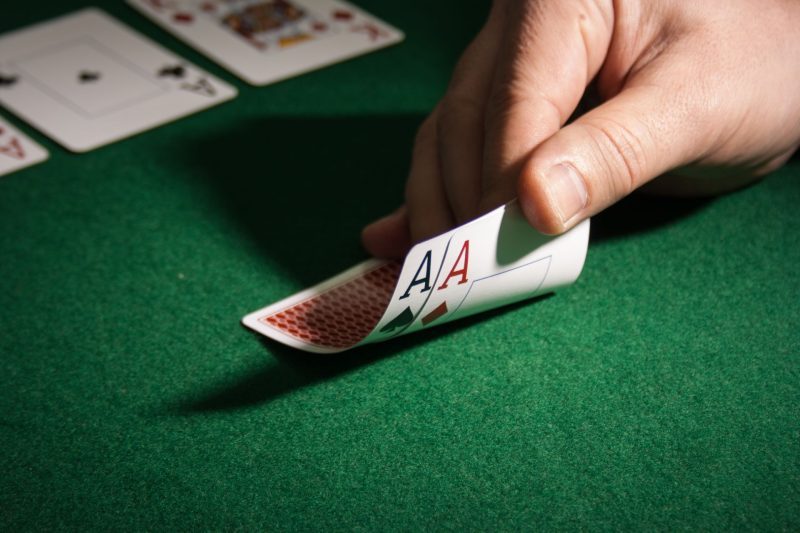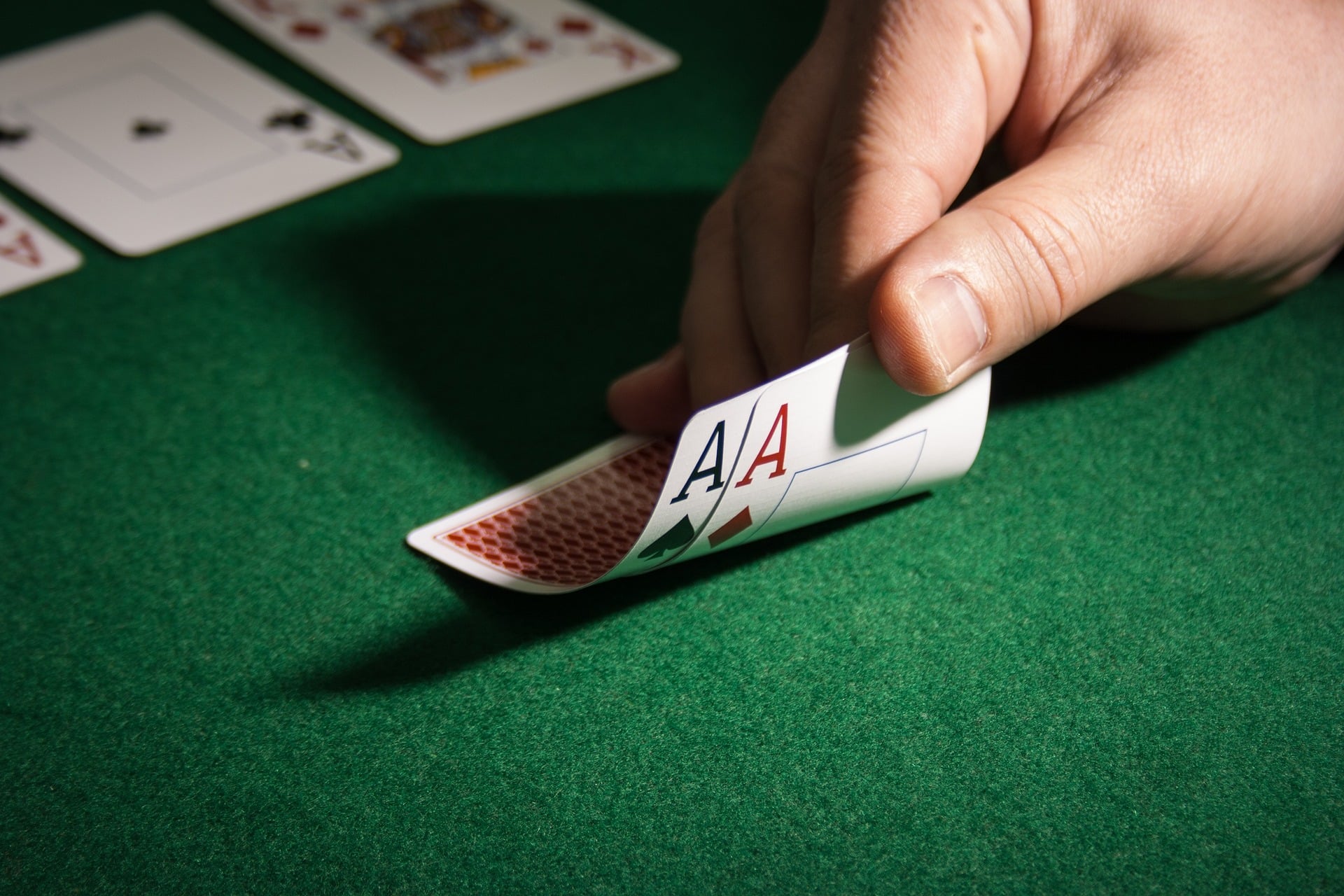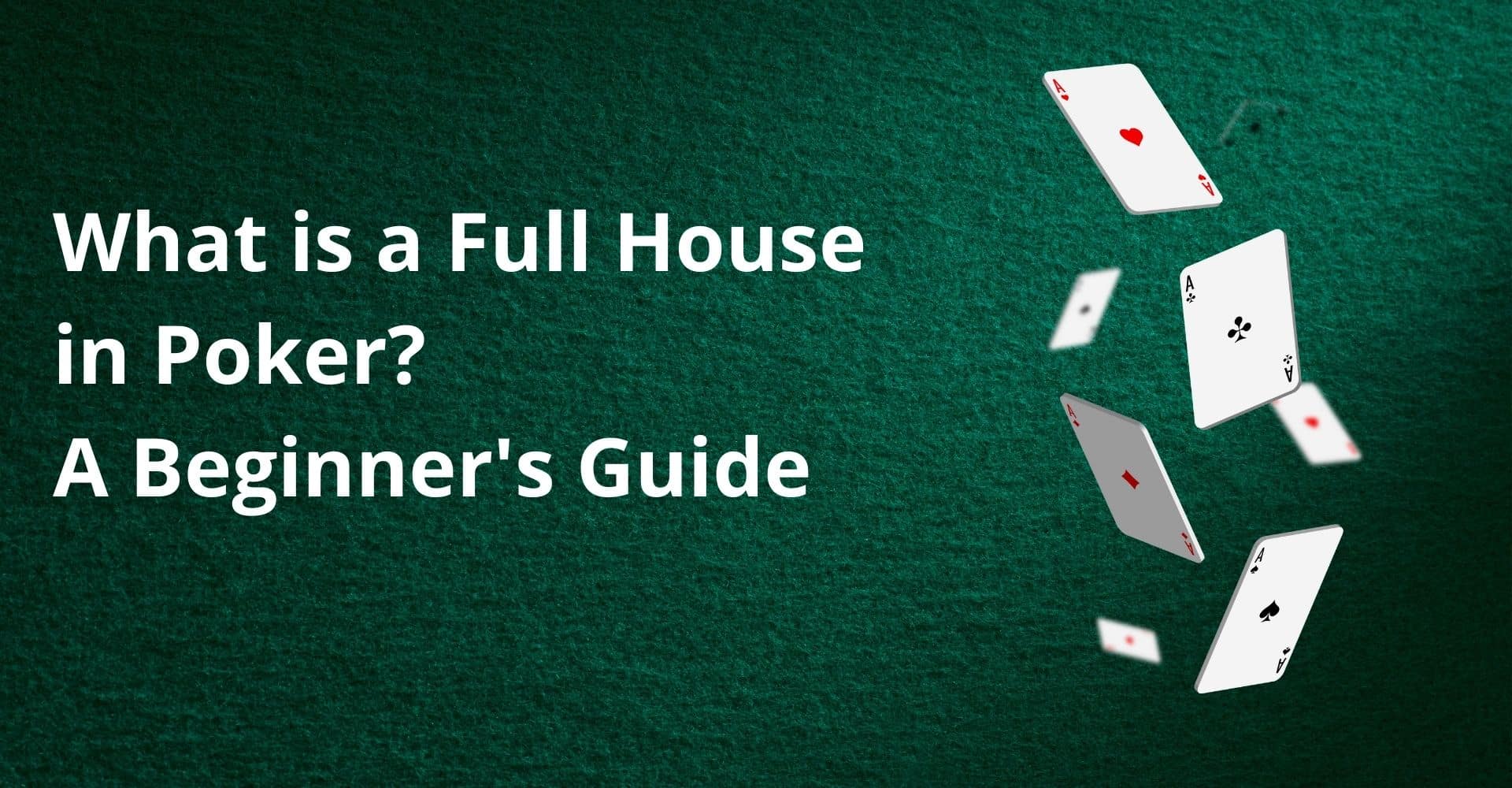Today, Texas hold ‘em is the most popular variant of poker. The game was first played in the early 1900s and it needed several decades to gain some real traction. In the 60s and the 70s, it was introduced into casinos and before the turn of the century, it became a global hit.
Texas hold ‘em is the main event at major poker tournaments such as the World Poker Tour and the World Series of Poker. If you’ve ever watched poker on TV but you’re unsure what kind of poker it was, it was probably Texas hold ‘em. It entered the mainstream a while ago and is only getting more popular.
But if you still haven’t managed to catch the rules of the game, you’re at the right place. In this article we’ll explain how to play Texas hold ‘em. We’ll go through hand rankings, clarify the most important rules and explain the basics of the betting process.

Hand rankings in Texas hold ‘em
Although there are countless different types of poker, a vast majority of these use the same hand rankings to decide winners and losers. Here they are, arranged from strongest to weakest.
- Royal flush – this hand contains 5 highest-ranking cards of any suit. For example: 10♦, J♦, Q♦, K♦, A♦
- Straight flush – to get a straight flush, get hold of any 5 cards of the same suit that can be arranged in sequential order. For example: 3♠, 4♠, 5♠, 6♠, 7♠
- Four of a kind – when you have 4 cards of the same rank, you have a 4 of a kind. For example: 9♠, 9♥, 9♦, 9♣
- Full house – this hand contains 3 cards of the same rank + 2 cards of the same rank (but obviously not the rank identical to the first 3 cards). For example: 5♠, 5♣, 5♥, 8♣, 8♦
- Flush – you need any 5 cards of the same suit to connect a flush. For example: 3♥, 8♥, 10♥, Q♥, K♥
- Straight – to get a straight, you need to connect 5 cards of any suit arranged in sequential order. For example: 7♥, 8♣, 9♦, 10♣, J♥
- Three of a kind – this hand contains 3 cards of the same rank. For example: 7♣, 7♥, 7♠
- Two pair – when you have 2 pairs of cards identical by rank, you have a two pair. For example: 4♥, 4♠, 10♣, 10♥
- A pair – a pair consists of 2 cards of the same rank. For example: 3♦, 3♥
- High card – in cases where players can’t connect any of the mentioned hands, the winner is the one holding the highest card.
Tie-breakers
Whenever multiple players have equally strong hands, there’s always some kind of a “high-card” rule to decide the winner. For instance, if 2 players both have a straight, the one with the highest high card takes the pot. So if one player has a 4, 5, 6, 7, 8 (of any suit) in hand, while the other one holds 7, 8, 9, 10, J, the latter is the winner.
Moreover, if they both have a flush, again the one with the highest card wins. So the suits don’t matter. If player A holds 2♥, 5♥, 7♥, 8♥, K♥ and player B holds 4♣, 7♣, 9♣, J♣, Q♣, player A has a better hand.
In the event of a two pair, the player with the highest high pair takes the money. And in the case of a full house, you compare the trips. So if player A has 4, 4, 4, 10, 10, and player B has 7, 7, 7, 8, 8, player B wins because 7>4.
Finally, in situations where multiple players have connected identical hands, the winner is the player holding the highest unused card (“kicker”).

How to play Texas hold ‘em poker
The essentials
Now let’s get to the rules specific to Texas hold ‘em. Texas hold ‘em is a variant of community poker. Every player gets 2 cards face-down (called “hole cards”) at the very beginning of the hand, and then the dealer gradually reveals 5 more cards.
These 5 cards are called community cards and anyone can see them and use them once they’re on the board. So in the end, every player can choose from 7 available cards to connect any 5-card hand they want, and the one with the strongest hand wins.
But before the winner is decided, there are 4 rounds of betting. The first one takes place after the initial 2 cards are dealt; the second one after the “flop” (first three community cards); the third one after the “turn” (the fourth community card), and the fourth one after the “river” (the fifth community card).
Betting is the heart and soul of Texas hold ‘em. Its whole point is to anticipate the outcome based on very little information and then bet accordingly. This amount of information increases after the flop, turn, and river, so the betting between players also takes many twists and turns during just one hand.
Start of the game and order of play
Starting positions are very important in Texas hold ‘em poker. The player who bets first has the least information because he can’t watch other players act before he does. On the other hand, the last player to bet has a great advantage as he can wait for those before him to give up or he can try to figure out other players’ cards based on their behavior and the size of their bets.
That’s why the last two players to act have to place a bet of a certain pre-determined size every time before the cards are dealt. The last player places a larger bet, and his position is called the “big blind” (BB), while the second to last one, who sits to the right of BB, places a half of that bet and is called the “small blind” (SB).
The dealer sits to the right of SB, and the dealer button, signifying the dealer, moves to the left after every hand. The first player to bet sits to the left of BB and is called under-the-gun (UTG). After he starts the hand, the play proceeds to the left, ending with BB.
Betting rules in Texas hold ‘em
As it was mentioned, there are 4 rounds of betting in each Texas hold ‘em hand. Technically, the first ones to bet are SB and BB who automatically bet at the beginning of the first hand.
In general, in order to remain in the game of poker, you need to at least match the highest current bet or even pay more than that. For instance, if the big blind is $10, players can either bet $10 as well (they can “call”) or bet more than that (“raise”). If they don’t want to bet that much, they have to give up on that hand (“fold”).
The round of betting is over when all the active players (players who didn’t fold) have bet the same. So if you bet $30, for instance, and everyone else matches that bet, you can’t raise your bet again. You can do that only if another player raises – then you can call or re-raise.
Starting from the second round, all players can also “check”. Checking means you choose not to raise nor fold, in situations when nobody has raised the bets from the previous round yet. In theory, all active players can check at the start of the second, third, and fourth round and the pot can stay the same throughout these rounds, up until the showdown at the end of a hand.

Betting limits
Another important concept when it comes to betting in Texas hold ‘em are limits. The most popular kind of Texas hold ‘em is no-limit hold ‘em, where you can bet as much as you like at any point. The only limit is the number of chips or the amount of cash you have at the table.
There are also games with fixed limits, where the amount you can bet as well as the number of raises per round are fixed. The last option is the pot limit, where you can basically bet as much money as the pot contains at a given moment.
Example of a Texas hold ‘em hand
Finally, let’s see an example of a Texas hold ‘em hand to better illustrate the rules of the game and its betting structure.
Let’s assume there are 4 players. A is UTG, B is the dealer, C is the small blind (SB), while D is the big blind (BB). The small blind is $10, while the big blind is $20. Two cards are dealt to each player:
A (UTG): 10♠, A♥
B (the dealer): J♣, J♥
C (SB): 3♥, 7♦
D (BB): 9♠, K♠
The round starts with player A. In order to continue, he needs to put at least $20 in the pot in order to match the BB bet. A calls, adding $20 to the pot. B matches the bet and raises by another $30. C folds. D now has to add at least $30 to stay in the game. D calls, and then A calls as well. The round of betting is over and there’s $160 in the pot (A, B, and D put $50 each, while C put a $10 small blind at the beginning).
The flop: 5♥, 6♦, A♣
The second round starts. Here it’s important to emphasize that only the first round starts with UTG. All the other rounds start with the player immediately left of the dealer. In this case, since SB has folded, BB (player D) starts the round. D checks. A raises by $50. B calls. D folds after that. The round is over, pot size is $260 now.
The turn: 2♠
The third round starts. Both players decide to check.
The river: J♦
The fourth round starts. A plays first again, because he sits immediately left to the dealer (D folded in round 2). A checks, B raises by $100. A re-raises by $220, B calls. The round is over because A isn’t allowed to re-raise his own bet. Both players have added $320 each in this round, which amounts to $900 altogether.
Finally, B takes the pot. He has two Js in his pocket and takes one from the board, connecting a three of a kind. A holds a pair of As (one from his pocket and one from the board).
Final thoughts
Those were the most important rules in Texas hold ‘em poker. It’s one of the most exciting variants of poker, where you need a mixture of skill, experience, math, intuition, and just a tiny bit of luck in order to take the money home.
If you’re thinking about starting to play, it’s fairly easy to find a reliable online place to begin. Virtually every online casino or poker room should be offering Texas hold ‘em games, as it’s by far the most widespread kind of poker. To start playing Texas hold ‘em today join Coinpoker, where you can play games with the cryptocurrency of your choice.






